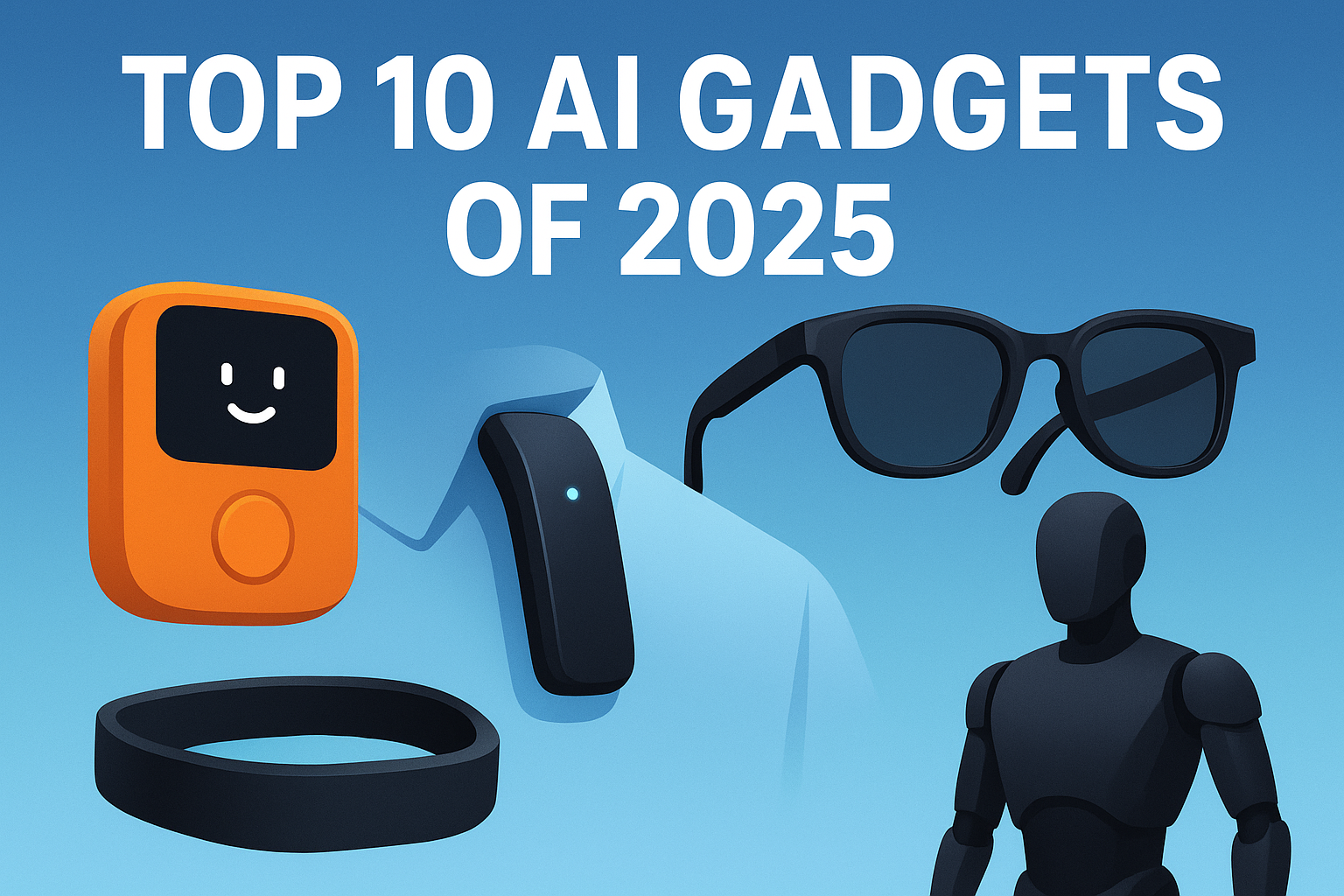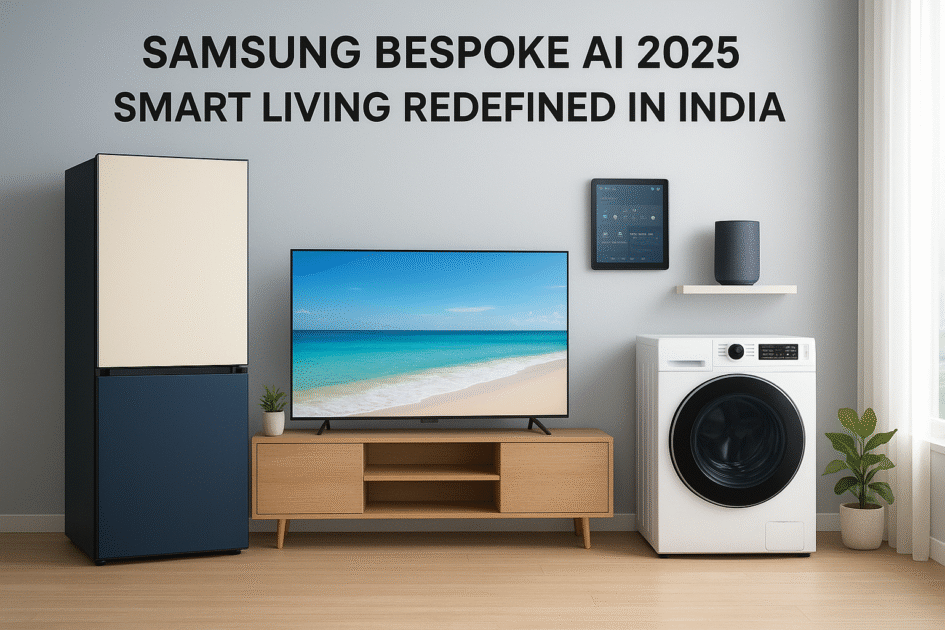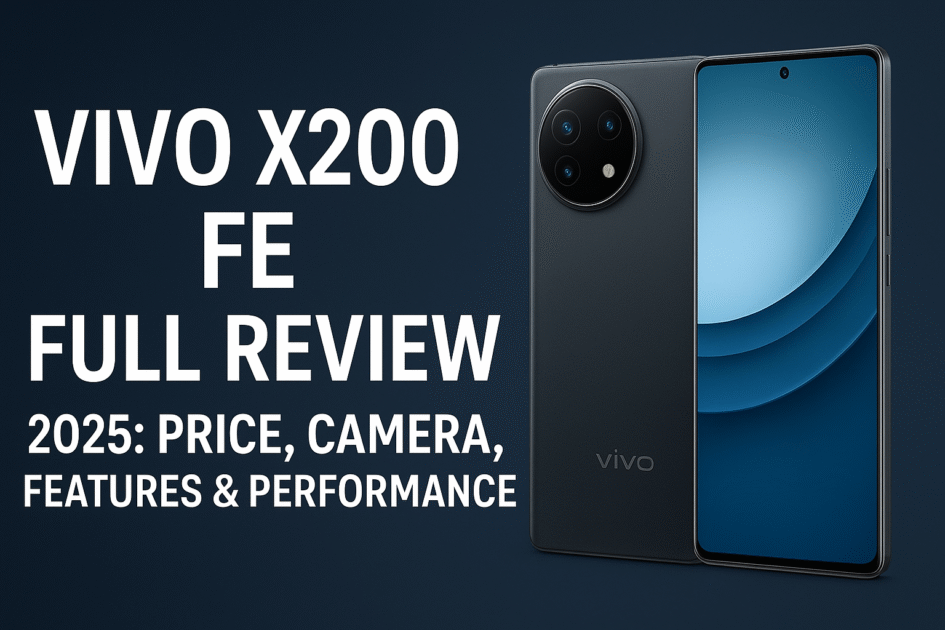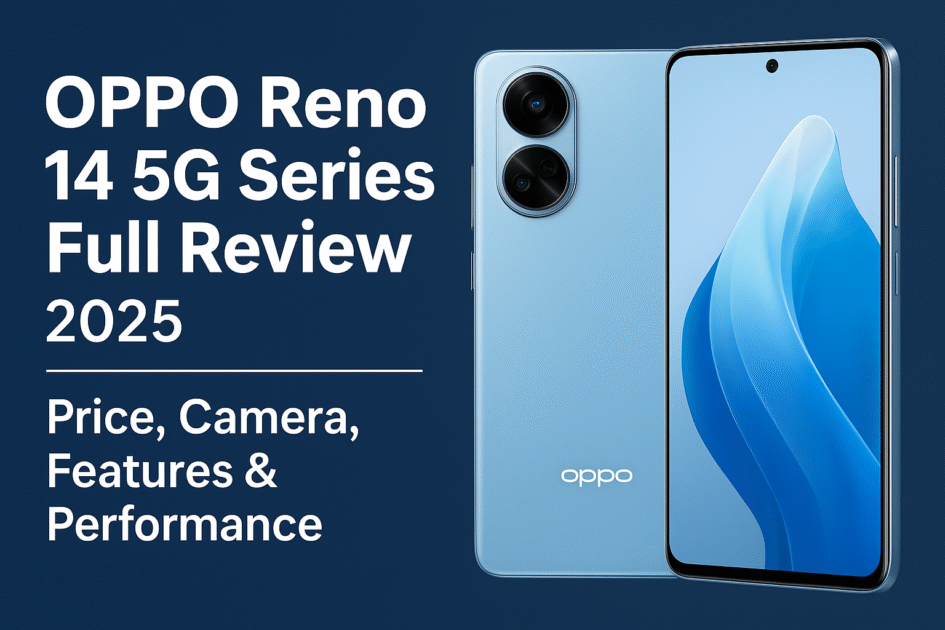Introduction: Living in the Age of Everyday AI
Imagine waking up in 2025: your AI-powered wearable wakes you up with a gentle vibration, your smart assistant has already scheduled your tasks, and your AI glasses are guiding you to the nearest café. What once felt like science fiction is now everyday reality.

2025 is shaping up to be the year when AI products move out of labs and into our daily lives. From wearable pins that replace smartphones to humanoid robots that can handle household chores, AI tech products are no longer just futuristic promises—they are here, changing how we live, work, and connect.
This guide explores the 10 most impactful AI products of 2025, how they are transforming lifestyles, and what their rise means for the future.
1. Humane AI Pin – The Smartphone Replacement?
When Humane launched the AI Pin, many thought it was just another gadget. But this small, screenless wearable has started a wave of change.
- How it Works: The pin clips onto your clothes and uses a projector + voice AI to answer questions, make calls, and even translate conversations.
- Real-Life Use: Imagine standing in a foreign country; instead of fumbling with Google Translate, you just tap your pin and speak. It instantly gives you a response in the local language.
- Why It Matters: It challenges the dominance of smartphones by pushing for a screen-free, AI-first future.
2. Rabbit R1 – Your Personal AI Sidekick
If Humane’s Pin focuses on minimalism, the Rabbit R1 takes a playful approach. This small orange device with a rotating camera and voice AI feels like carrying a pocket-sized assistant.
- Key Strength: It uses Large Action Model (LAM) technology, meaning it can interact with apps on your behalf—like ordering food, booking rides, or playing music.
- Scenario: Instead of opening 5 apps to plan your evening, Rabbit R1 simply handles it when you say: “Plan a dinner with friends nearby.”
This shift towards action-based AI signals the future: assistants that don’t just “answer” but actually do things for you.
3. Apple Vision Pro – Spatial Computing at Its Best
Launched earlier, but truly evolving in 2025, the Apple Vision Pro has blurred the lines between the real and digital worlds.
- Features: A spatial computer with mixed reality display, powered by Apple’s visionOS.
- Use Case: Architects can design in 3D space, gamers experience hyper-realistic worlds, and remote workers attend meetings as if sitting across the table.
- Impact: Vision Pro isn’t just a headset—it’s Apple’s attempt to redefine computing.
4. Meta Smart Glasses – The AI Glasses You Can Actually Wear Daily
Unlike bulky VR headsets, Meta’s AI Glasses look like regular eyewear but are loaded with AI features.
- Key Features: Real-time object recognition, instant translation, hands-free recording, and integration with Meta AI.
- Everyday Example: Walking in a new city and the glasses display restaurant ratings directly in your field of vision.
- Big Picture: These glasses are a bridge between today’s world and tomorrow’s always-on augmented reality.
5. Microsoft Copilot PC – Redefining Laptops
2025 saw the rise of the Copilot + PC, a new category of laptops designed around AI.
- Unique Power: Equipped with Neural Processing Units (NPUs), they can run AI tasks locally without cloud dependence.
- Why It’s Big: It makes AI assistance like summarizing documents, editing images, or coding faster and offline-ready.
- Future Outlook: Expect every major laptop brand to shift toward AI-first architecture by 2026.
6. Tesla Optimus – The Everyday Humanoid Robot
Elon Musk’s Tesla Optimus is no longer just a prototype—it’s making real progress in 2025.
- Abilities: Walking, lifting, sorting, and basic household tasks.
- Why It Stands Out: Unlike robots stuck in research labs, Optimus is designed for mass-market use at scale.
- Imagine: By 2030, having a humanoid assistant might be as normal as owning a dishwasher today.
7. Sony AI Camera – Creativity with Machine Learning
Sony has integrated AI into cameras in a way no other brand has.
- Key Edge: Its AI models can auto-adjust lighting, recognize subjects, and even recommend creative framing.
- Target Audience: Photographers, content creators, and filmmakers.
- Impact: It lowers the entry barrier for high-quality content creation, making AI-powered creativity accessible to everyone.
8. Neuralink – Direct Brain-Computer Interface
Perhaps the most controversial, yet fascinating, Neuralink is advancing human-AI interaction.
- What It Does: A brain implant allowing people to control devices, restore movement, or even communicate directly with machines.
- Early Impact: Helping patients with paralysis regain control over devices.
- Long-Term Vision: Blurring boundaries between biological intelligence and artificial intelligence.
9. Ola Krutrim AI – India’s Homegrown AI Product
Not all innovation comes from the West. Ola Krutrim AI is India’s step toward building a homegrown AI ecosystem.
- Why It’s Different: Focused on Indian languages, local culture, and real-world accessibility.
- Products: AI-powered assistants, smart devices, and localized AI models.
- Significance: It shows that AI is not just a global trend, but also a regional revolution.
10. Amazon Astro 2 – Smarter Home Robots
Amazon continues to push home automation with Astro 2, an AI-powered robot assistant.
- Features: Moves around the home, monitors security, integrates with Alexa, and helps with reminders.
- Use Case: Imagine a mobile Alexa that can follow you room to room.
- Future: Combined with smart homes, Astro could make houses truly self-managing environments.
Trend Analysis: What All These Products Have in Common
Looking at these innovations, a few clear trends emerge:
- Wearable AI – From pins to glasses, AI is becoming part of our body language.
- Action-Oriented AI – Tools like Rabbit R1 don’t just “assist”—they act.
- AI + Hardware Fusion – Laptops, cameras, robots—AI is baked into hardware, not just apps.
- Local & Global AI – Companies like Ola show how AI adapts to cultural needs.
Mini FAQ Section
Q1: Which AI product of 2025 is the most useful for daily life?
Humane AI Pin and Meta Glasses are practical for everyday use.
Q2: Are humanoid robots like Tesla Optimus really coming to homes?
Not yet mainstream, but mass use could start by the late 2020s.
Q3: What’s the biggest barrier to AI gadgets in 2025?
High cost and privacy concerns.
Q4: Which AI product is best for students?
Microsoft Copilot PCs, as they help with studying, coding, and research.
Conclusion: More Than Just Gadgets
2025’s AI tech products aren’t just fancy gadgets; they represent a shift in human lifestyle. From brain-computer interfaces to AI-powered eyewear, these devices show that AI is no longer a tool we use—it’s becoming a partner we live with.
As the years progress, the biggest question won’t be “What can AI do?” but rather “How much of our lives should we let AI handle?”



